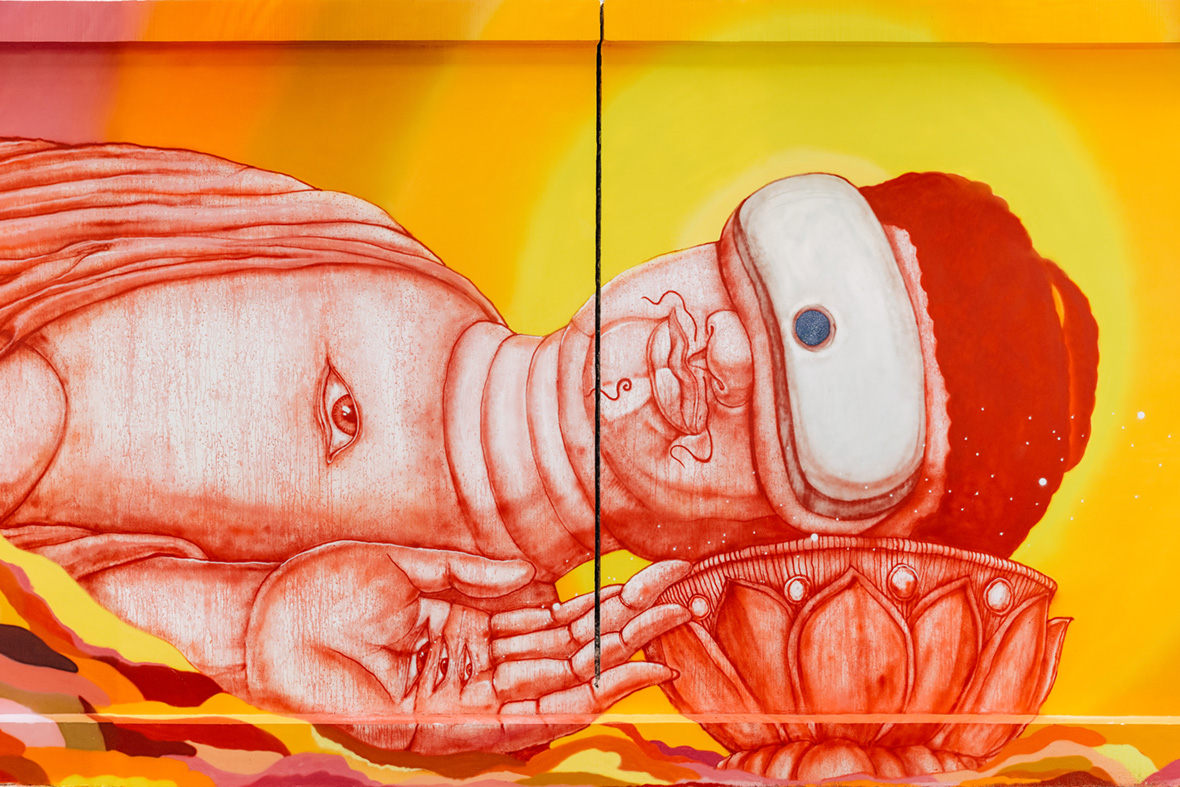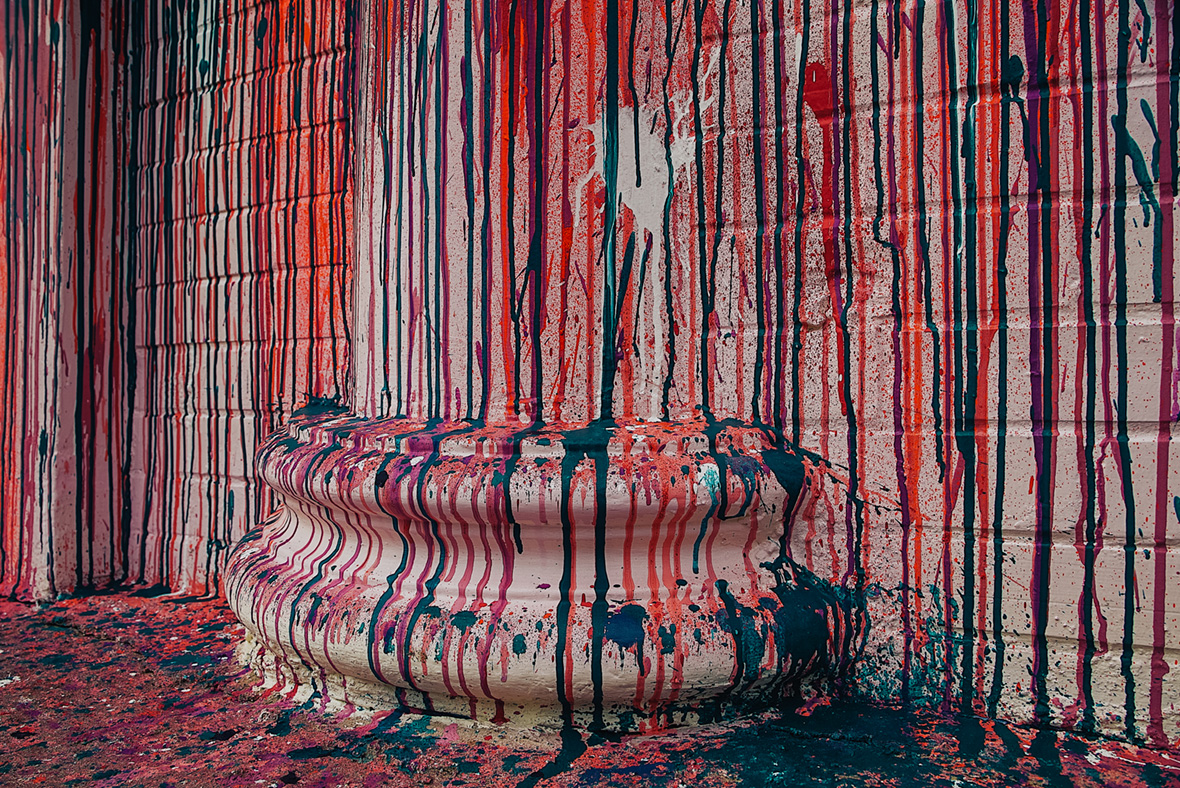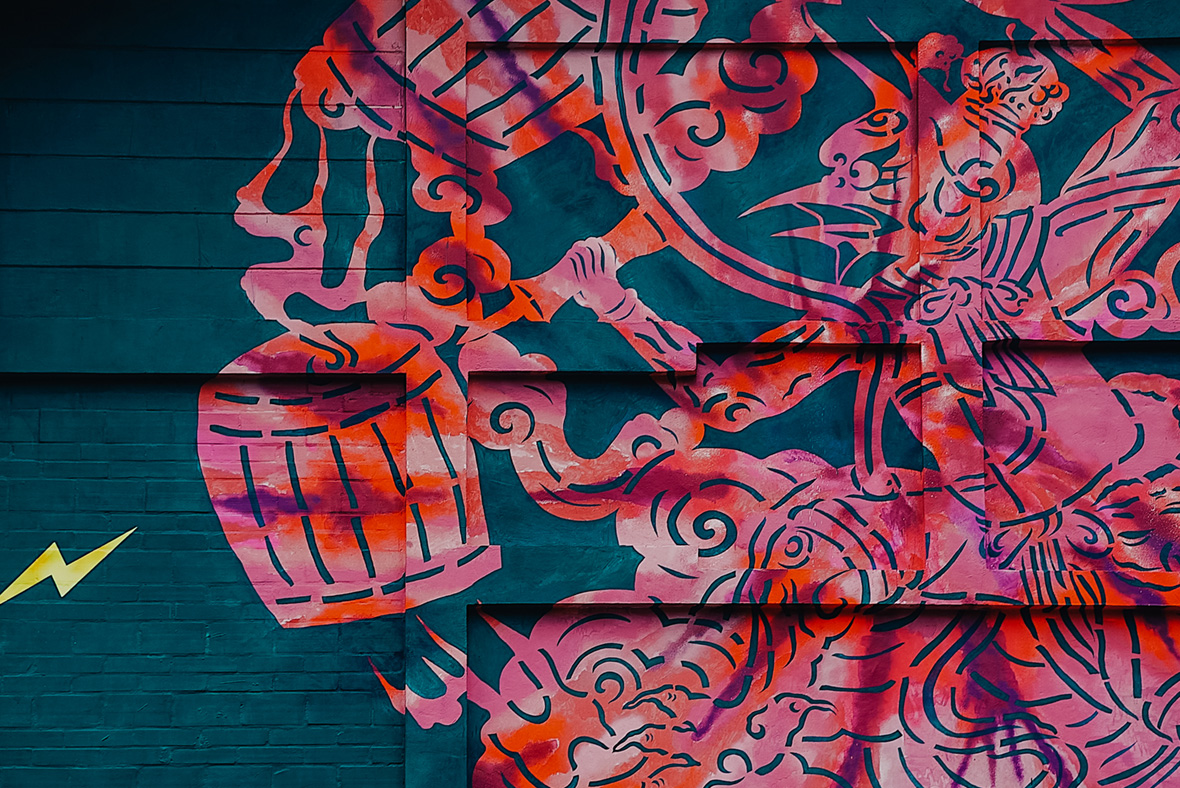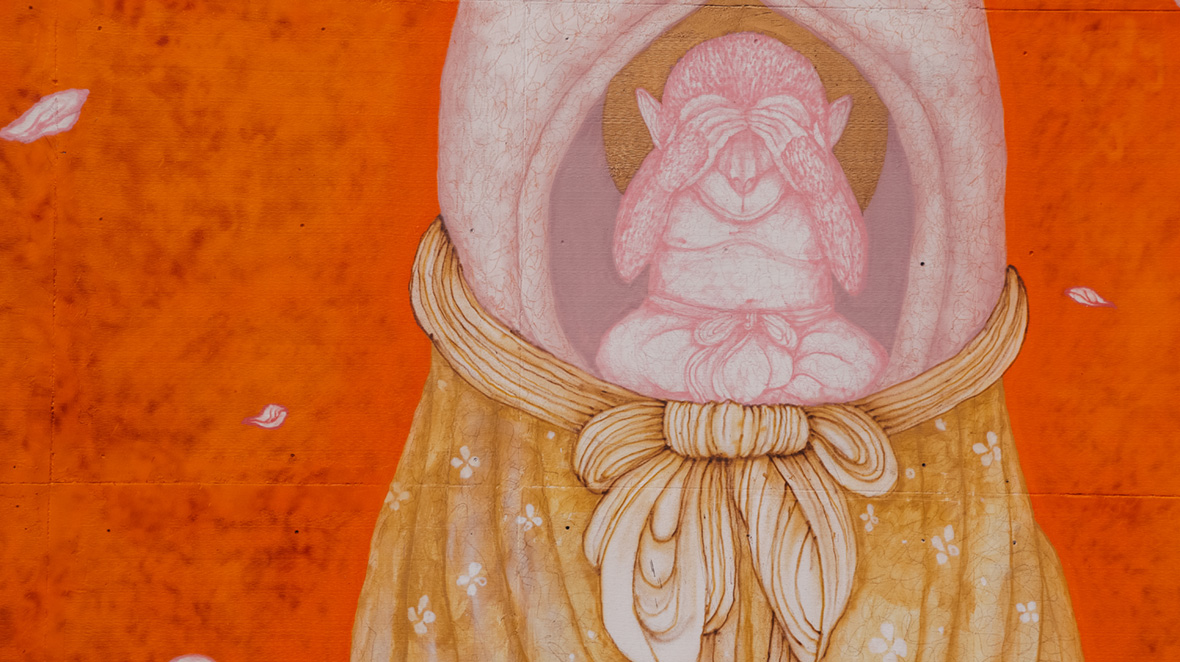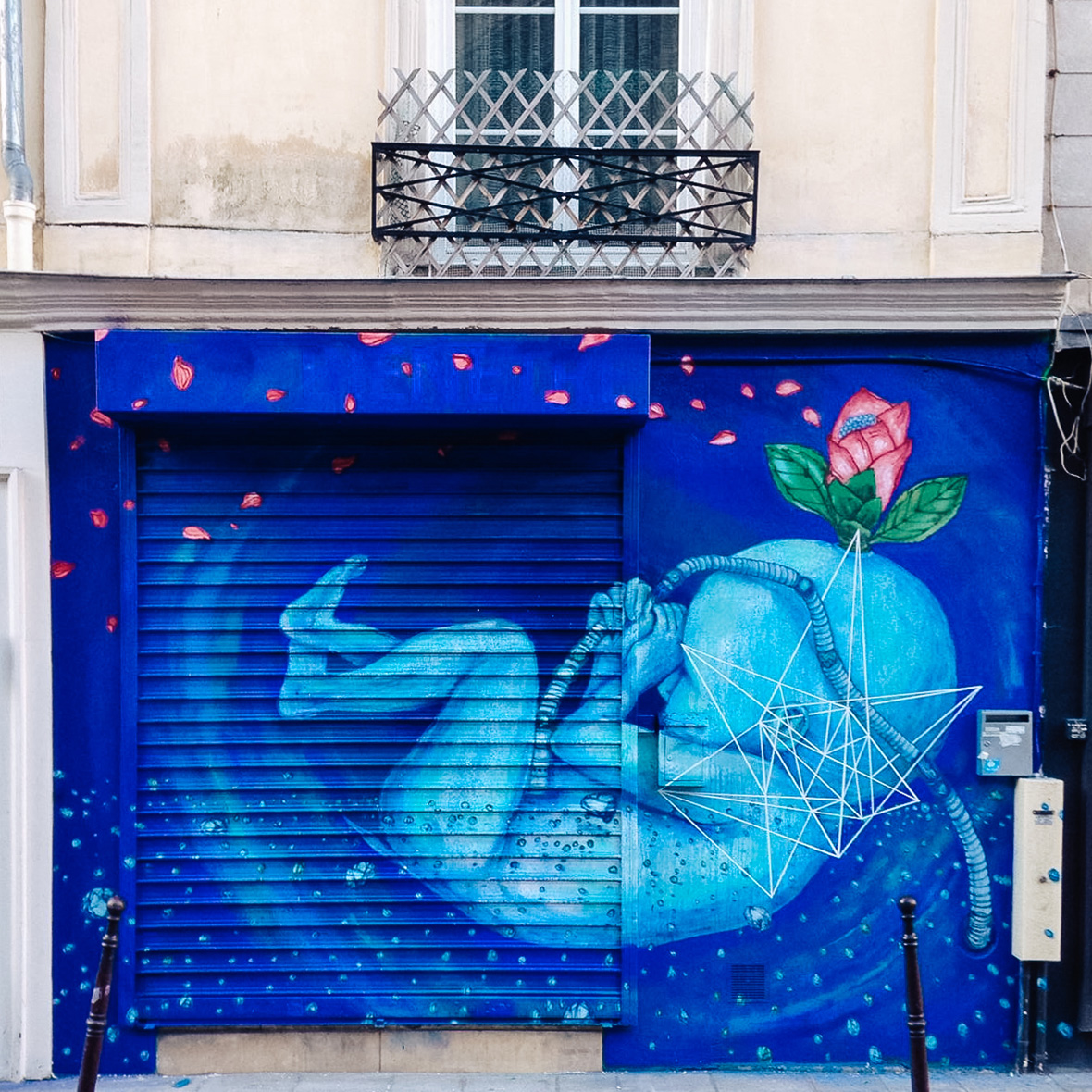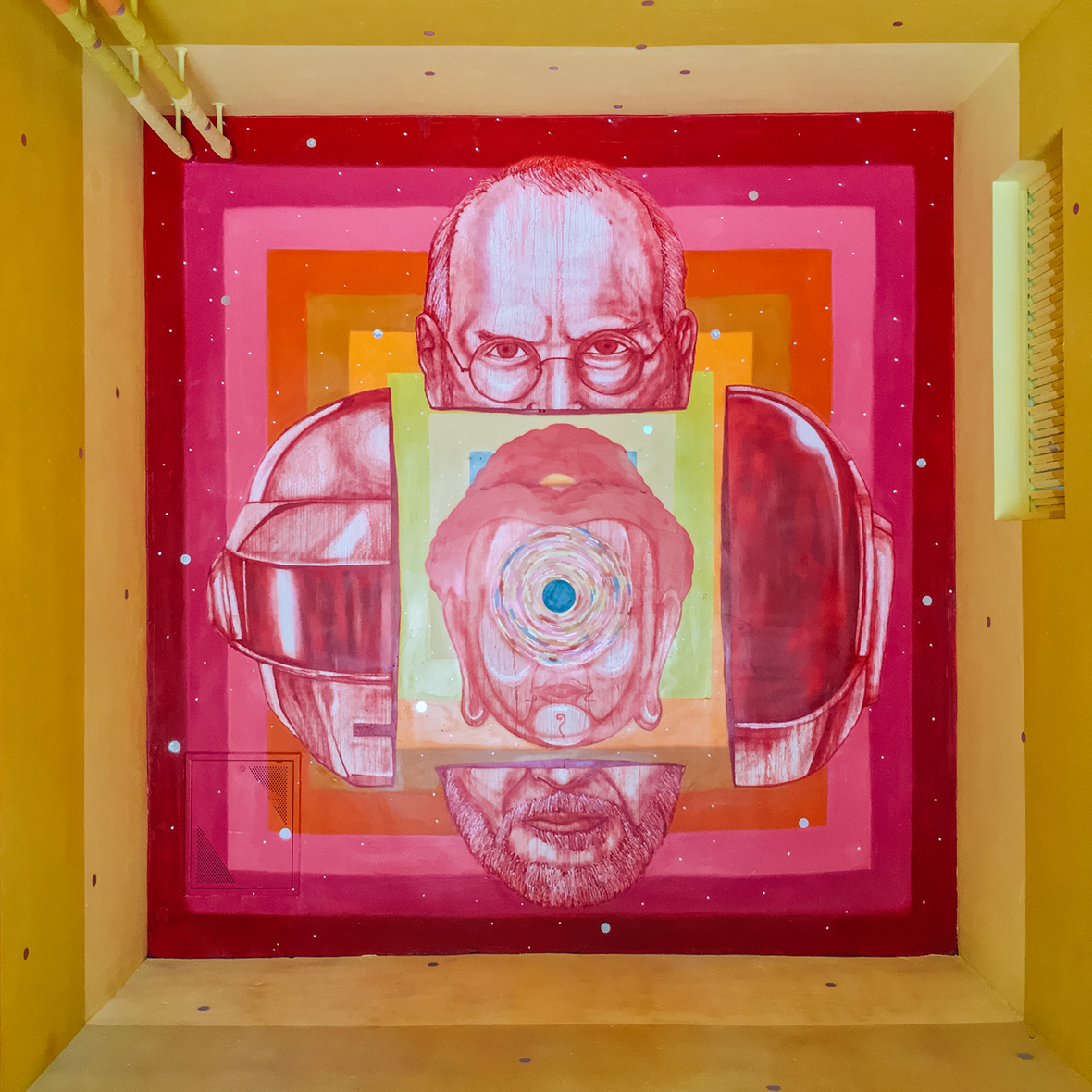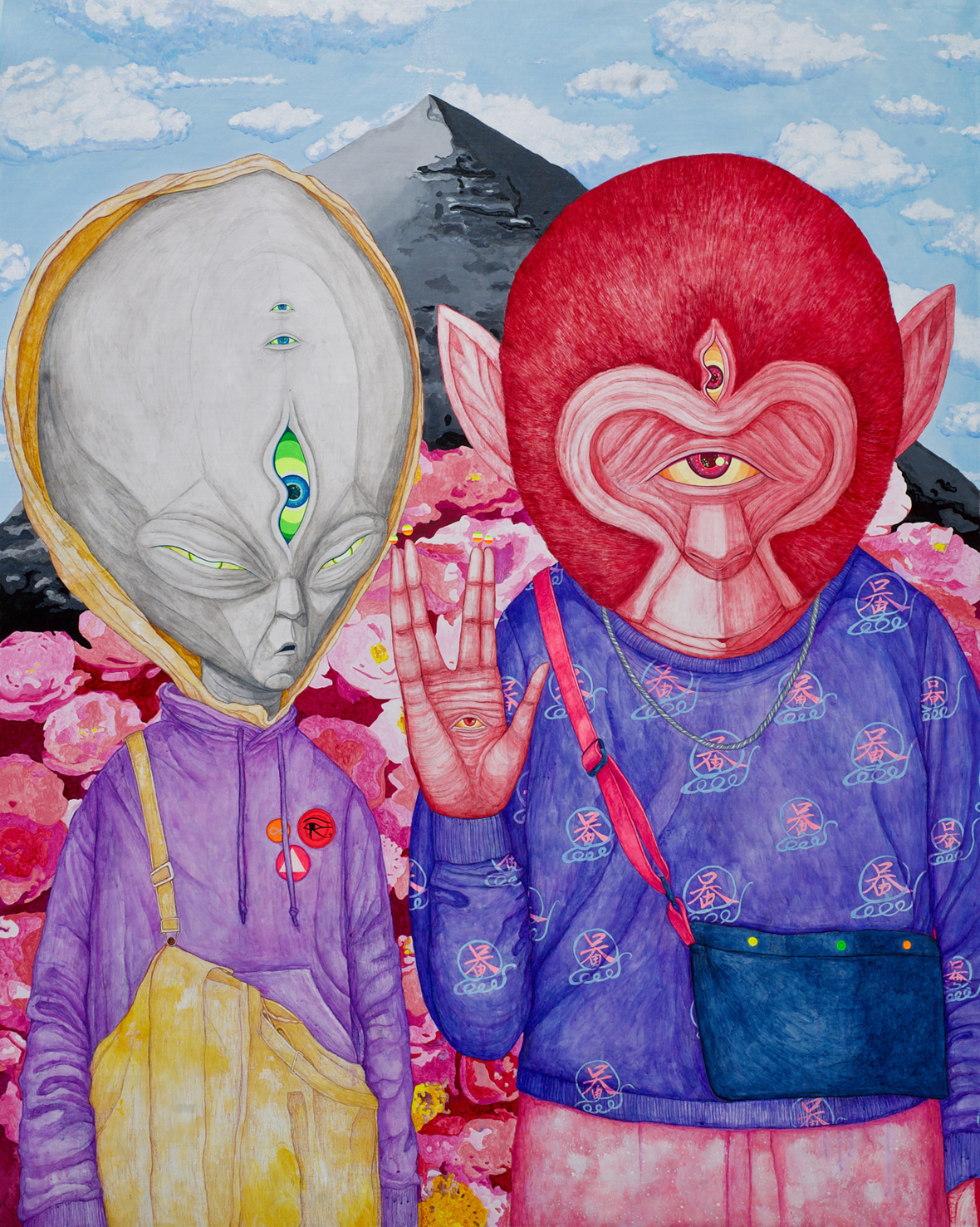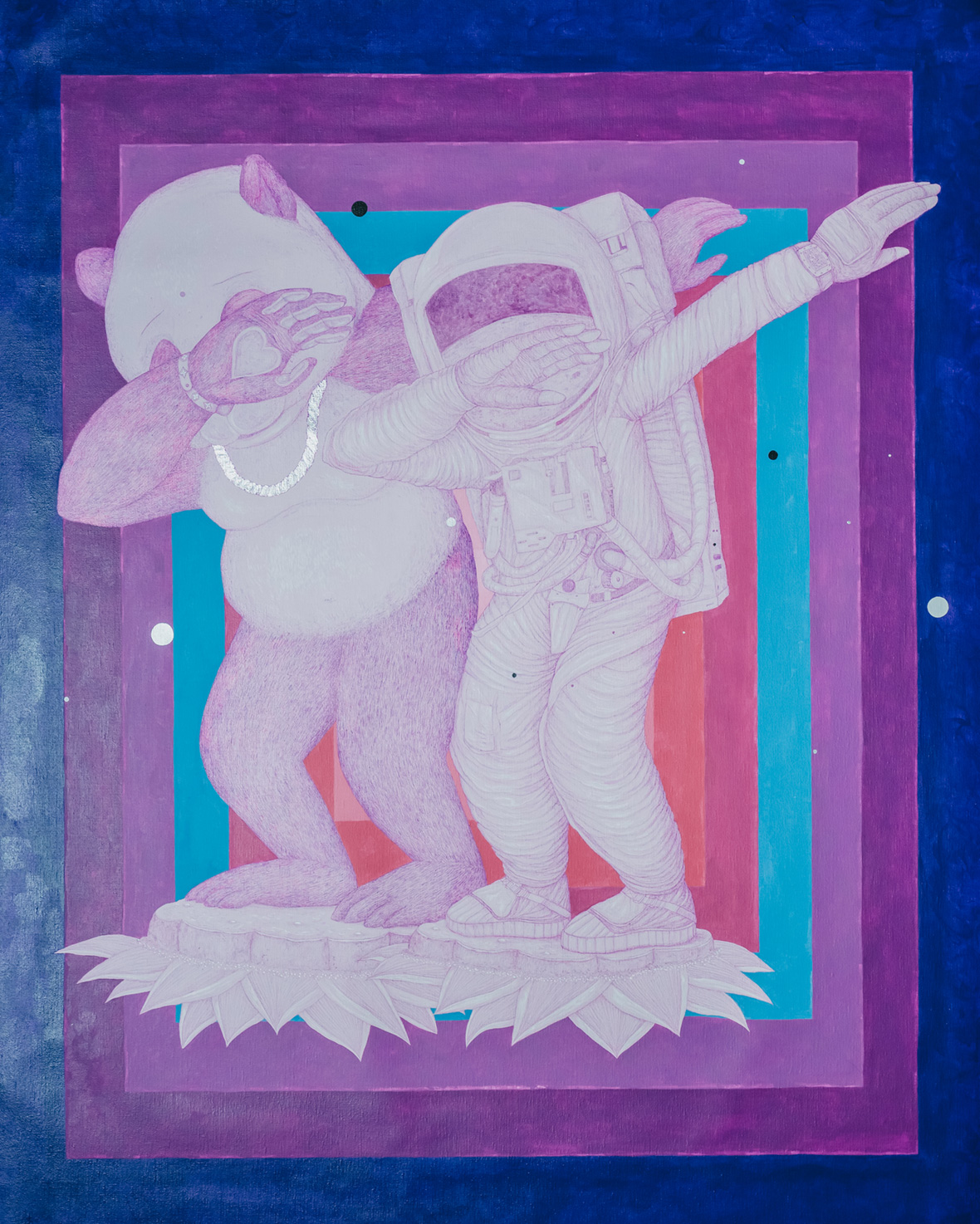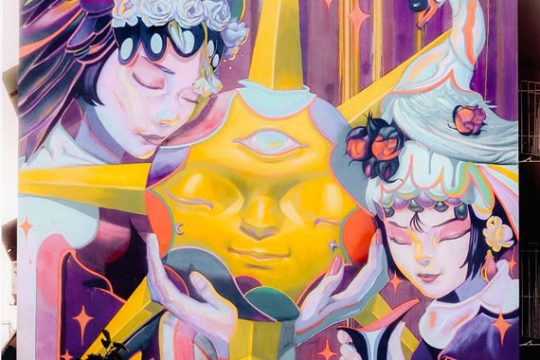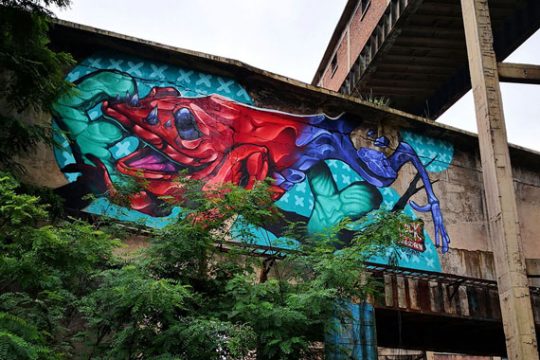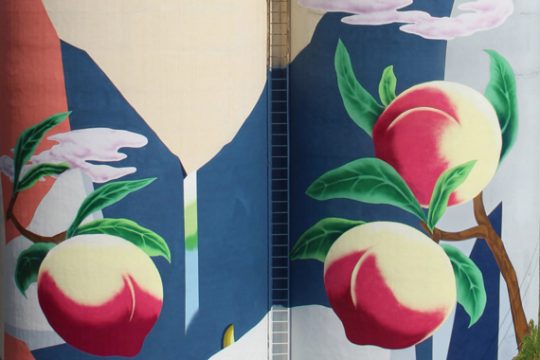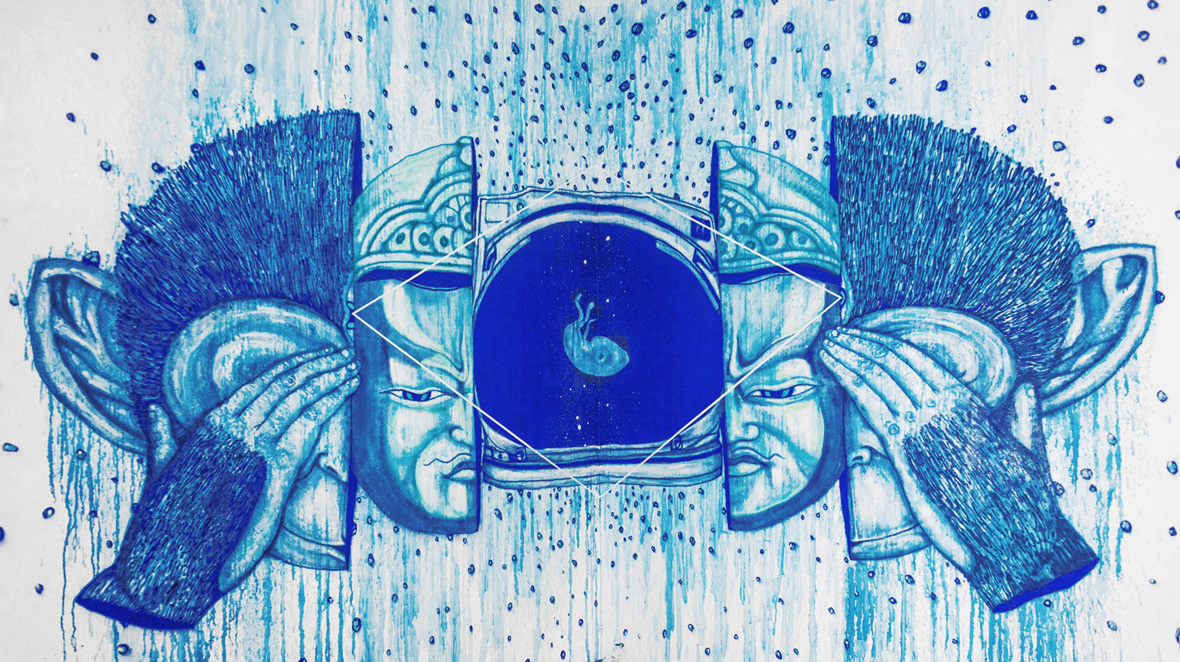
The power of three is all around us.
It’s a recurring motif in religions across the world: the Holy Trinity in Christianity, the Trimurti in Hinduism, and the three marks of existence in Buddhism, just to name a few. Even in art and photography, the rule of thirds governs visual balance. Other fields—such as writing, science, comedy, philosophy, music, and more—all rely on similar triplicities. Human minds seem to thrive on these types of patterns.
Chengdu-based graffiti artist Fan Pang, best known by his moniker Fansack, doesn’t pretend to fully understand the significance of the rule of thirds, but his work wholly embraces it. Fan—in his pursuit to find meaning within traditional and contemporary symbols—blends Eastern philosophy, religion, and science to create vibrant murals populated by stoned astronauts, zen monkeys, and pensive priests. In doing so, he kneels at the altar of pop culture and offers audiences a heady tribute to what we’ve always known to be true: good things come in threes.
“3” 的力量无处不在。
世界各地的宗教文化中,经常出现 “3” 这个数字:基督教的三位一体、印度教的三神一体以及佛教的三法印等等。在艺术和摄影方面,则有构图平衡的三分法原则。至于诸如写作、科学、喜剧、哲学、音乐等其他领域,也有类似与 “3” 有关的理念。“3” 似乎是一个能激发人们丰富想像的数字。
成都涂鸦艺术家庞凡(Fansack)虽未自诩,却已参透 “3” 这个数字的玄妙,他的作品充满了各种 “3” 的寓意。在探索各种传统与现代符号的意义中,Fansack 融合东方哲学、宗教和科学,创作出活力四溢的壁画,宇航员、充满禅意的猴子和沉思的僧侣是他的作品中经常出现的形象。他借鉴流行文化的元素,向观众展示着众所周知的真理:好事成‘三’。
Graffiti, Hip-Hop, and Youth Culture
Now 31 years old, Fan has graced the streets of Sichuan with his spray-paint creations since his teenage years. The difference now is that his art is no longer considered vandalism. With over 100 murals in Chengdu alone, including brand collaborations and commissions from the local government, he’s lost track of how many walls he’s painted throughout the country. It’s an ironic twist for Fan, who in his younger years was used to being chased off by security guards before even finishing a piece.
With the proliferation of hip-hop culture in the mainstream by way of TV shows such as The Rap of China and Hot-Blooded Dance Crew, his art—and street art in general—has become a lot less faux pas in China. Fansack is now the biggest name in street art south of the Yangtze River.
涂鸦、嘻哈和青年文化
今年 31 岁的 Fansack 从少年时代就游走于四川街头,创作涂鸦作品。和以前相比,现在唯一的区别是他在创作时不会再被当作破坏公物来对待。单是在成都,他就创作了 100 多幅壁画作品,包括品牌合作和受当地政府委托的创作,连他自己也数不清在全中国到底创作过多少副壁画作品。这对 Fansack 来说挺有讽刺意味的,毕竟在他年少的时候,常常还没完成创作就要被保安赶走。
随着《中国有嘻哈》和《热血街舞团》等电视节目的热播,嘻哈文化在中国主流社会越来越流行,Fansack 的艺术作品,或者说整体的街头艺术,已经不像以往那样 “上不了台面”。Fansack 也一跃成为江南地区最著名的街头艺术家。
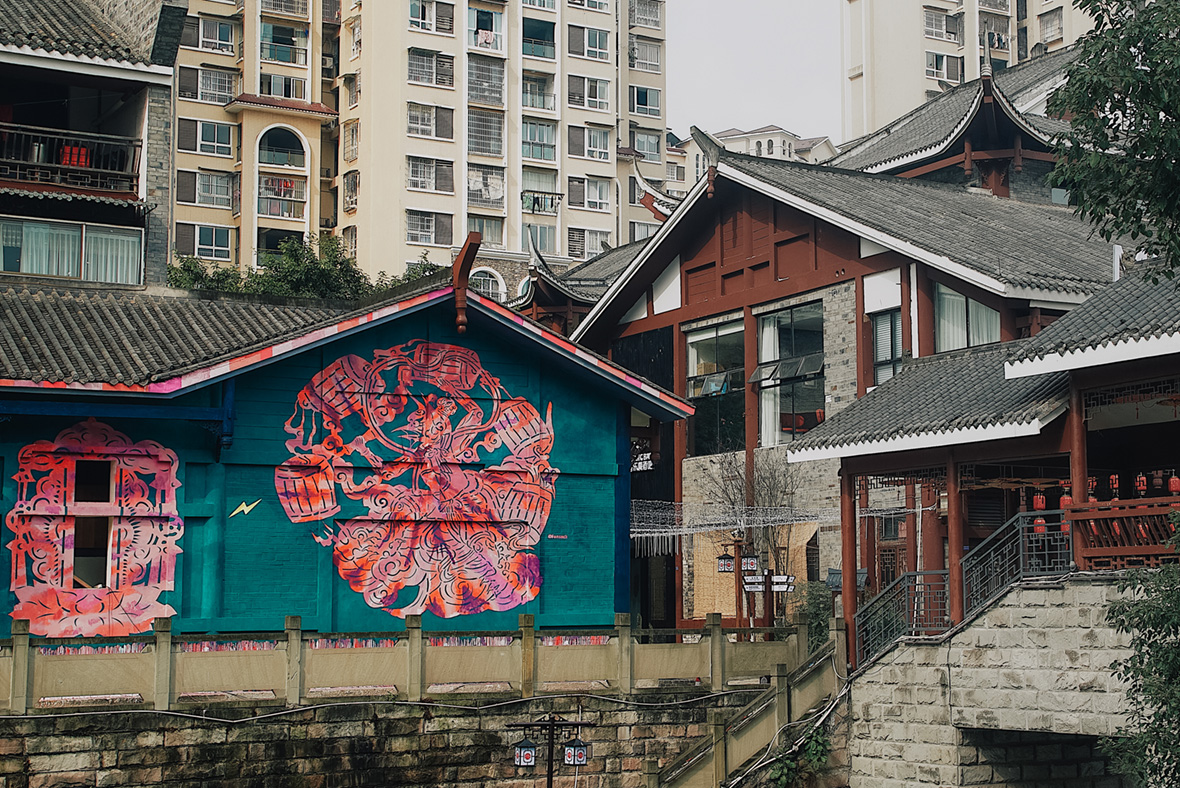
Within the last decade, Chengdu has proven to be fertile grounds for hip-hop. From street art to rap music, the region’s hip-hop culture has even garnered international recognition after the success of acts linked to Chengdu Rap House (CDC), such as the Higher Brothers and Wang Yitai. With the Sichuan hip-hop community as tight as ever, everyone—from rappers to street artists—seem to be spurred on by the success of one another.
在过去十年间,成都肉眼可见地成为了嘻哈文化重镇。在成都说唱会馆(CDC)的 Higher Brothers、王以太等人的推波助澜下,成都从街头艺术到说唱音乐都获得了国际范围的认可。四川嘻哈圈子之间一贯的紧密联系,让每一个人的成功都成为了彼此的激励。
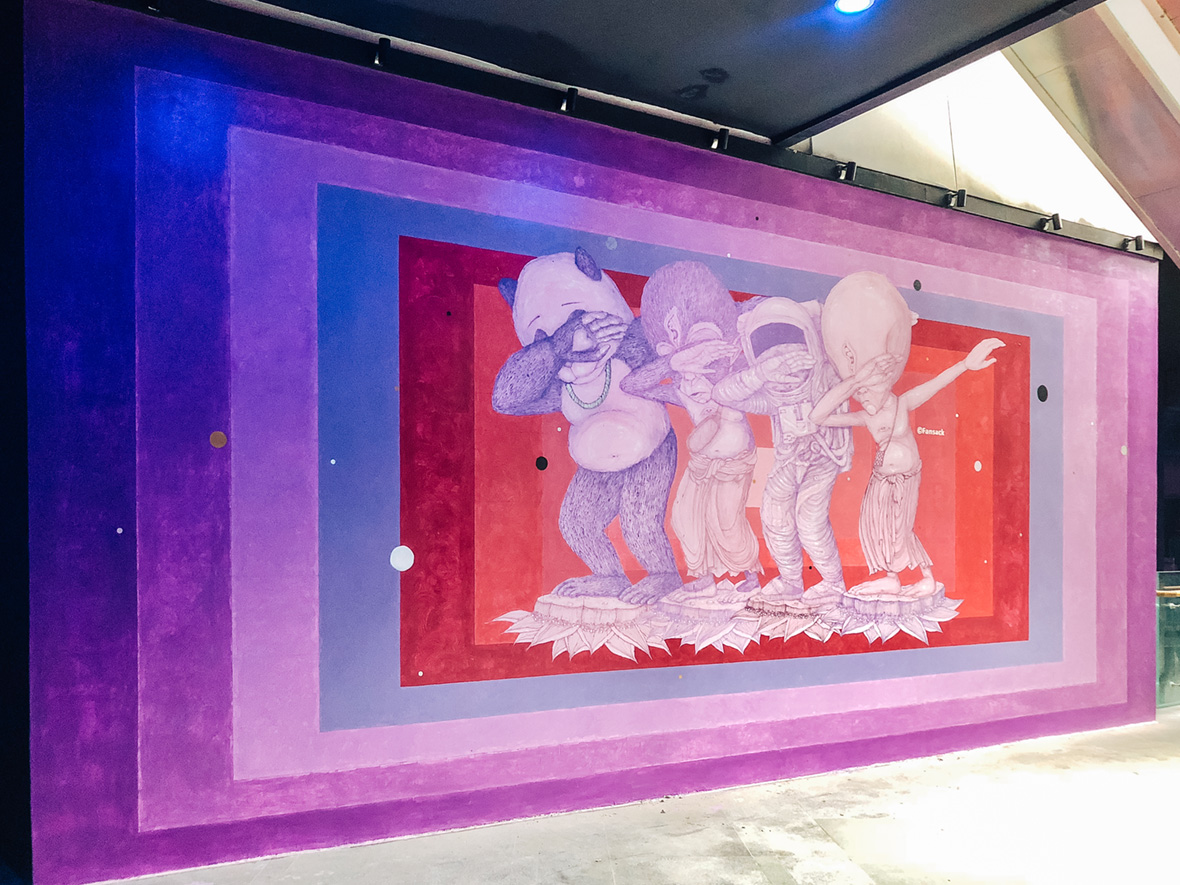
Beneath the dimly lit basement of Club Nox, one of the most popular hip-hop venues in Chengdu, is Fan’s studio. Inside, a mural of the Higher Brothers—who appear as a quartet of aliens doing the dab—cover a wall. “Some of my closest friends are musicians, like the Higher Brothers, Bohan Phoenix, and Wang Yitai; we all know each other,” he says. “I’m actually working on an album cover for Wang Yitai right now. My studio is right down the hall from his producer, Harikari.”
灯光昏暗的地下室 Club Nox,是成都最著名的嘻哈聚集地之一,也是 Fansack 的工作室。在工作室的一幅壁画上,Higher Brothers 以外星人的形象,做着 Dab 手势。“我的很多好朋友都是音乐人,譬如 Higher Brothers、Bohan Phoenix 和王以太,我们彼此都认识。”他说,“事实上我正给王以太创作专辑封面。从我的工作室出去,穿过走廊就是他的制作人 Harikari 的工作室。”
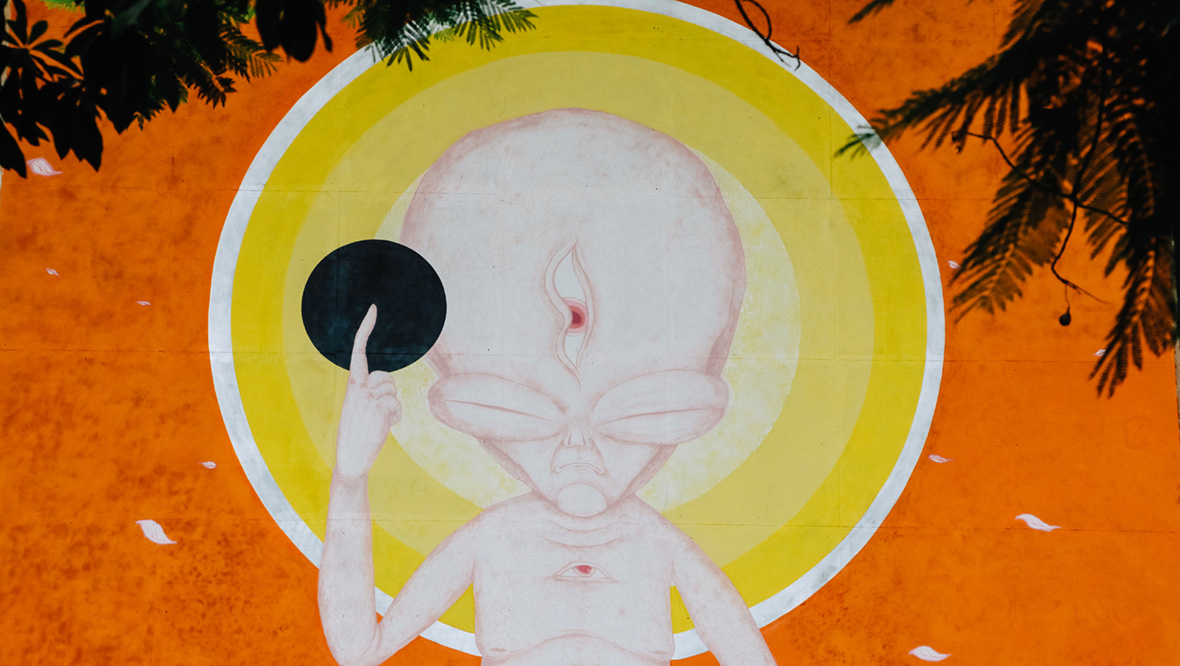
Past, Present, and Future
Fansack is a firm follower of Eastern philosophies, such as Taoism and Buddhism, and his artwork often features spiritual motifs, which range from lotus flowers to reclining Buddhas. “I trust karma,” he says. “When you plant a seed with your consciousness, it will blossom one day, with or without your consent. So what kind of fruit do you want later?”
Fansack’s journey as an artist began with a conscious decision to grow his own creative seed. He was introduced to street art through watching the documentary 20 Years of Graffiti in Paris (2004) and became hooked. When graffiti legend Cyril Kongo came to China, he even flew to Shenzhen to meet him. In the following years, he moved to France to study art, where he earned a master’s degree from Sorbonne University and a name for himself within Europe’s fine-art circuit. As more galleries began to take notice of his work, Fansack had the opportunity to not only personally meet the street-art legends he looked up to, but also work alongside them.
过去、现在和未来
Fansack 是一位坚定的道教和佛教等东方哲学追随者,他的作品中常常出现各种带有宗教色彩的元素,如荷花和卧佛。Fansack 说:“我相信因果报应。当你在意识里种下一颗种子,它总会有开花的一天,不论你愿不愿意。所以你要想想,以后究竟想得到什么样的果?”
Fansack 成为艺术家也源于他在意识里埋下的一颗 “种子”。他第一次认识街头艺术是在观看《巴黎涂鸦 20 年》(2004)这部纪录片的时候,看完后,他就迷上了街头艺术创作。当传奇涂鸦艺术家 Cyril Kongo 来中国时,他甚至专门飞到深圳去见他。随后几年,Fansack 移居法国,修读艺术专业,获得了索邦大学 (Sorbonne University) 的硕士学位,并在欧洲艺术圈子闯出一席之地。随着越来越多的画廊关注他的作品,Fansack 有机会结识自己崇拜的传奇街头艺术家,还与他们展开过合作。
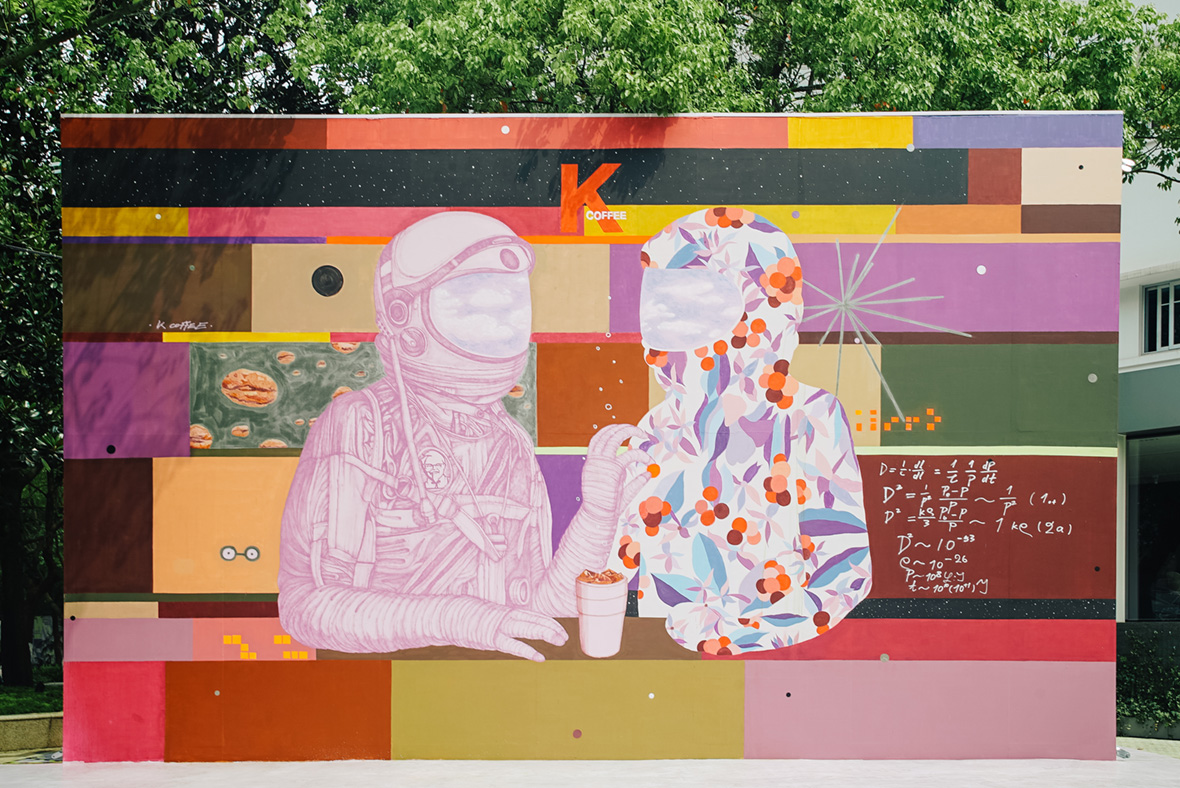
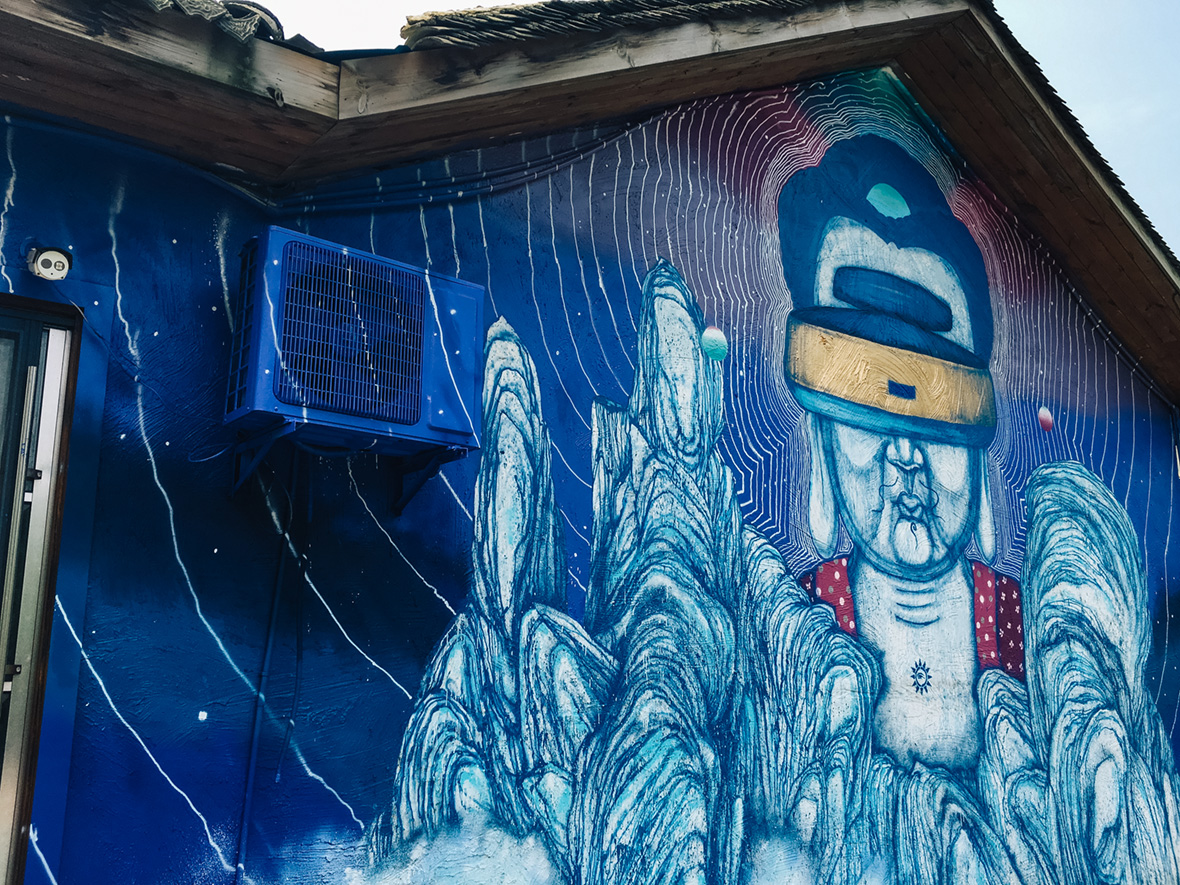
As both an artist and an entrepreneur, Fansack operates with a business savviness that many artists lack: he always expects greater returns on his efforts. Although pop-culture and consumerism are themes prevalent in his work, they’re often rendered through a lens of playful humor instead of criticism. Popular Chinese children’s cartoons can be seen holding designer bags and with a third eye on their foreheads as if enlightened by their consumerism. Buddhas sip Cola-Cola and recline with VR headsets, astronauts lounge about with cups of KFC coffee, and monkeys don Supreme-branded robes. “I always consider my market, always,” Fansack says. “So many street artists think we should stay underground. . .and I respect that. But with age, we should also grow and adapt.”
To Fansack, art is all about balance, and he refuses to be consumed by ego, money, or rigid ideologies.
作为一名包揽创作和主办的艺术家,Fansack 身上有许多艺术家都缺乏的商业细胞:他希望自己的作品能获得更多的回报。虽然流行文化和消费主义是他作品中常见的主题,但他通常都是以幽默的方式呈现出来,而不是加以批判。在他的作品里,熟悉的中国卡通角色,拎着名牌包,额头画着第三只眼睛,仿佛寓意消费主义对他们带来的启发;在另一幅作品中,头戴 VR 耳机的佛陀正侧卧一旁,享受着杯中的可乐;宇航员在休息室里喝着肯德基咖啡;猴子身披 Supreme 的长袍。Fansack 说:“市场是我一直都会考虑的问题。很多街头艺术家认为我们要保持地下创作,我完全尊重这一点。但随着年龄渐长,我们也应该学着成长和适应。”
对于 Fansack 而言,艺术在于平衡,他拒绝被自我、金钱或呆板的意识形态所局限。
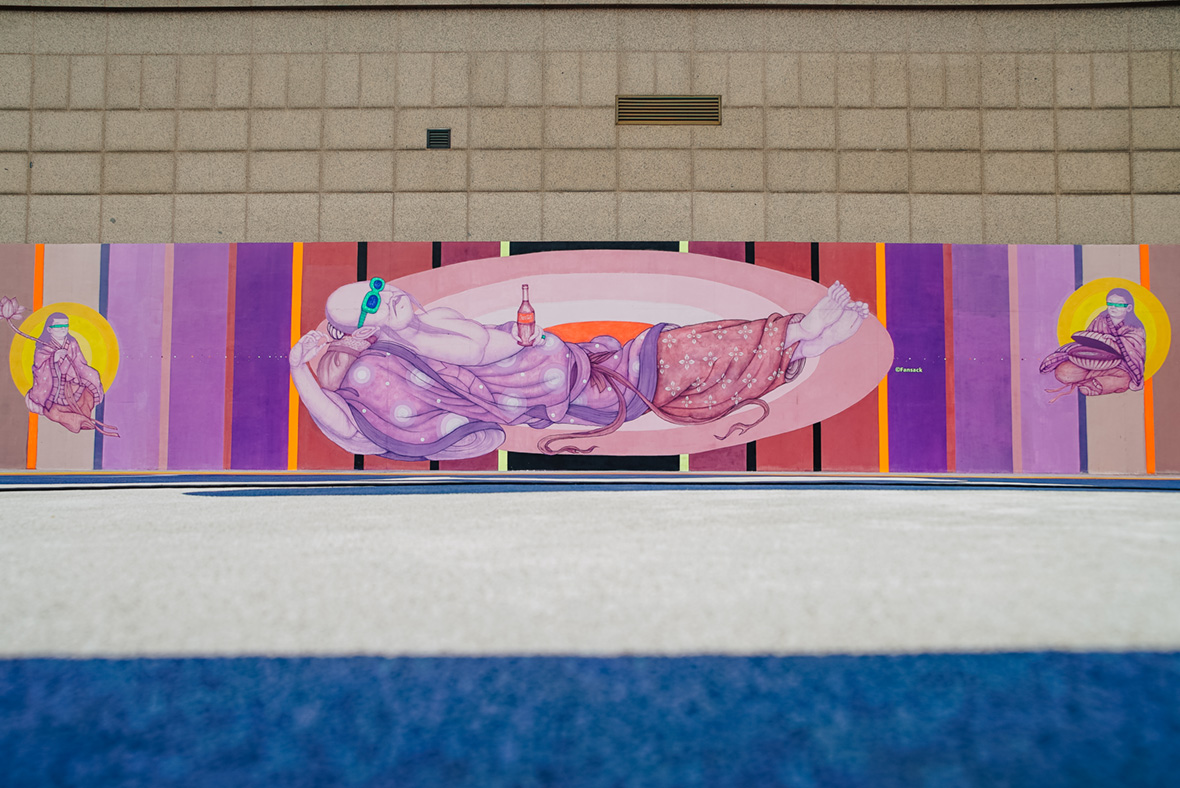
Art, Religion, & Science
For Fansack, art, religion, and science are lenses in which people can “discover the meaning of life, the meaning of the universe, and the relationship between ourselves and nature.” He captures this pursuit of greater understanding in his art. For example, in Enter the Oeil, he paints Chinese artist Ai Weiwei, nuclear physicist Albert Einstein, and spiritual leader Mahatma Gandhi as three parts of the same head. Each individual holds their own unique path toward ultimate truth, which is often symbolized in his artwork as the third eye. Likewise, the role of aliens, astronauts, and monks as frequent cast members in his artistic landscape are interchangeable. In one work, an alien might be dressed in priest robes; in another, a baby’s umbilical cord might be swapped with a space tether; and in yet another, an astronaut lounges in a traditional Tibetan bed. By splicing iconography in this fashion, Fansack doesn’t discount the notion that different truths can co-exist parallel to one another.
艺术、宗教与科学
Fansack 认为,艺术、宗教和科学是人们 “发现生命与宇宙的意义,探索人类与自然之间关系” 的方式。他在作品中诠释了这种对艺术的宏观认识。例如,在《入眼》这幅作品中,他描绘了中国艺术家艾未未、物理学家阿尔伯特·爱因斯坦和精神领袖圣雄甘地,将三人的面孔重叠在一幅画面里。这三个人都以自己的方式去追寻着终极的真理。在他的作品中,他经常以第三只眼睛来象征终极的真理。此外,他作品中常见的外星人、宇航员和僧侣形象常常互换身份,外星人可能穿着僧侣的长袍;婴儿的脐带可能是太空缆索;宇航员可能躺在传统的西藏床上。通过不同图像元素的拼接,Fansack 传达出一个信念:即使真理不同,也可以共存。
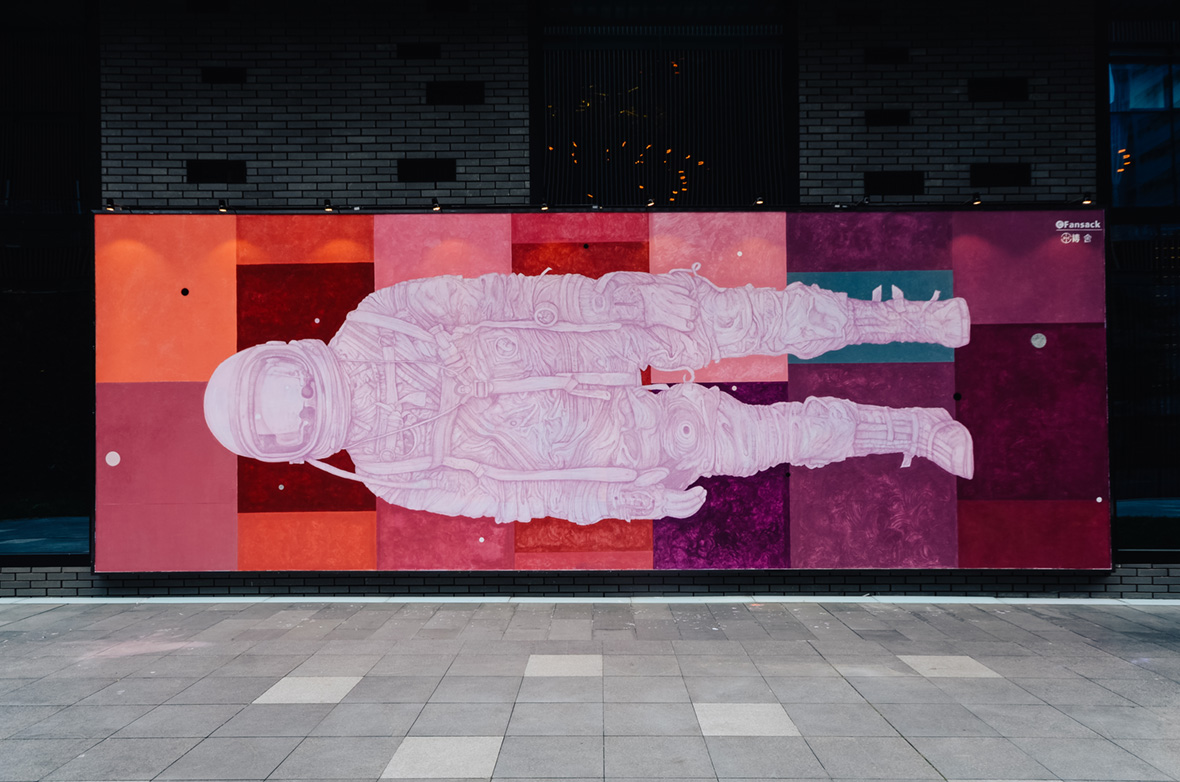
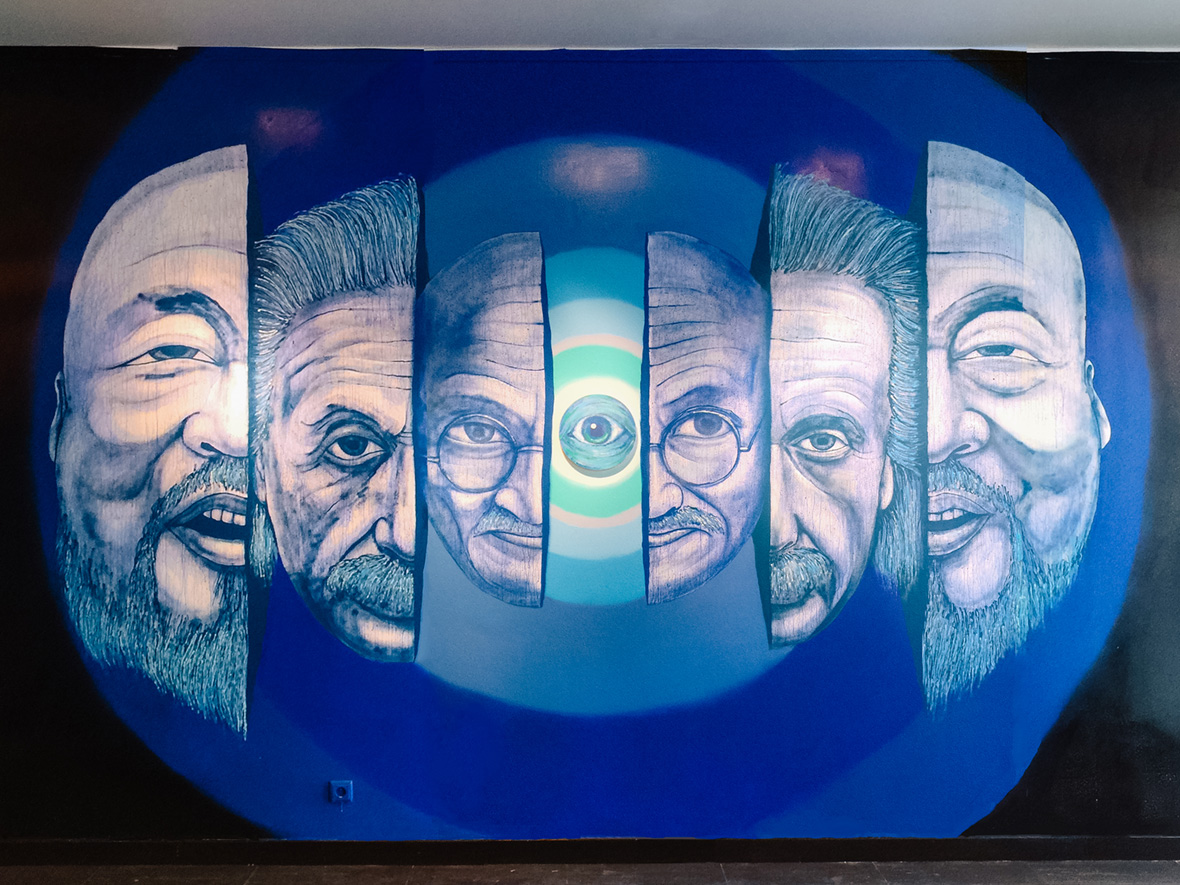
Stop, Look, and Listen
Taoism versus Capitalism, religion versus reason, collective versus self—Fansack’s art is full of opposing viewpoints. Yet, in painting contradictions in such a casual, approachable style, he offers the average person an entry point into these deeper concepts.
Whether on a busy commute or in an upscale art gallery, the universal charm of Fan’s art is perhaps its accessibility. For patient observers, his artwork reveals a multitude of parallel universes rich in symbolism. But even if you can only spare a brief glance upwards from a busy sidewalk in Chengdu, that’s okay, too.
停下来,看一看,听一听
道教与资本主义,宗教与科学,集体与个人 —— Fansack 的作品中充满了对立的概念。然而,通过以一种轻松随意的风格来描画这些对立概念,他的作品为大众提供一个切入点,去探索这些更宏观的哲学概念。
无论是在人来人往的路边或在高档的艺术画廊,Fansack 艺术作品的魅力或许就源于其平易近人的风格。耐心的观众能从他的作品中发现充满丰富象征意义的平行宇宙。但即便你只是匆匆地过路成都的街道,偶尔抬头看到他的作品,也是别有一番滋味的享受。
Like our stories? Follow us on Facebook and Instagram.
Instagram: @fansack
Weibo: ~/fansackart
Contributors: Rorí Mencin
Chinese Translation: Olivia Li


